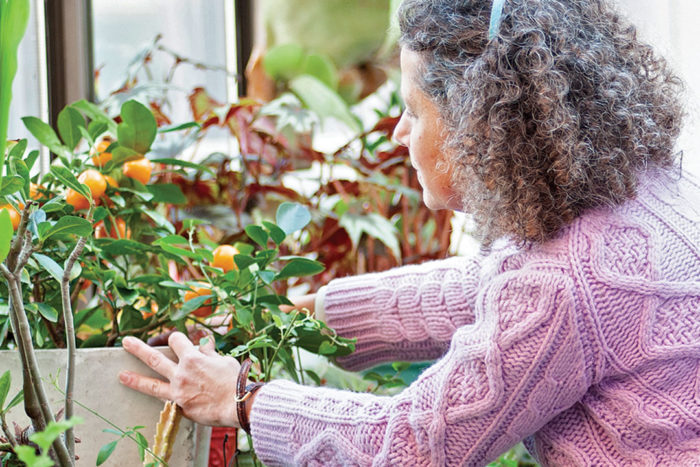Secrets to Growing Citrus
Citrus plants don’t fall into the indestructible category, but these tips will make citrus success more likely

Growing citrus is achievable. Granted, these plants don’t fall into the indestructible category, but they are among the few fruiting plants that are within the realm of reality. You can do this. And the rewards are worth the effort, especially if you factor in boasting rights.
Potting
The soil that comes with your citrus at the point of purchase is often pathetically poor, so give your newly adopted plant an immediate repotting using organic potting soil. A peat-based soilless mix is usually too thin to anchor the plant and provide the nutrition it needs. Rather than cramping the root system, give your plant a generous (but not huge) container.
Watering
Citrus are thirsty plants. When the furnace is running full blast and the sun is shining, they might need water daily—but monitor the soil to make sure a drink is necessary. Water when the soil is slightly dry, but not bone dry. Warning: a parched citrus can drop flowers before developing fruit.

Temperatures
Citrus thrive in the same temperatures that we find comfortable. When temperatures drop below 50°F regularly, they fail to absorb nutrients properly. If you keep your house ultra-toasty in winter, your citrus plant may not mind the high temperatures, but it might dislike the lack of humidity that results. If your home environment is very dry, run a humidifier for your citrus’s health and welfare. A citrus is not receiving sufficient humidity will demonstrate its discomfort by dropping leaves.
Fertilizing
Citrus are hungry plants, and they react quickly when you fail to serve up sufficient food. Yellow leaves are the telltale sign of a starving citrus. Although most houseplants do not require fertilizing in late autumn and winter, citrus are the exception. If you go organic, deliver diluted fish emulsion throughout the year—once every two to three weeks seems to work well. Winter light levels are low, so dilute the fertilizer more than the recommended dose.
Pruning
Container-grown citrus aren’t naturally graceful plants. Pruning will help them branch out, but still, it’s hard to achieve a balanced specimen. Just look at the plant and think of all those flowers and fruit.
Problems
Citrus are prone to infestations of scale: an insect that looks like a little brown bump on the leaf. They can also fall victim to red spider mites—tiny (but visible) arachnids evidenced by a web on the leaf undersurface and yellow mottling. But generally, citrus are not pestered by insects that plague most soft-wooded indoor plants. Keeping your citrus properly watered and fed is a great preventive strategy.
—Tovah Martin is the author of several books on houseplants, including The Unexpected Houseplant: 220 Choices for Every Spot in Your Home.





Comments
Log in or create an account to post a comment.
Sign up Log in